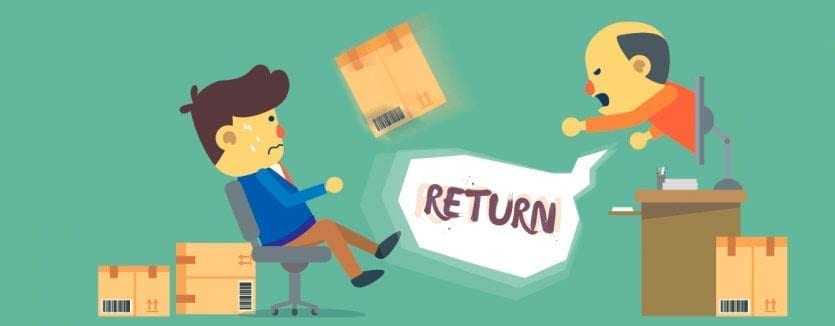Headache from returns? Identify the causes!
If you run a webshop, you know the dilemma. You want to serve your customers optimally with the right to free returns. But you also know that every return costs a lot of money. Online fashion retailers in particular have to deal with extremely high return percentages. They weigh heavily on profitability. Do we make it too easy for the online customer? Do you get headaches from returns? There is no ready-made medicine. But it helps if you map out the causes and patterns.
Of all European countries, Dutch Ecommerce entrepreneurs have the most headaches from the ease with which customers return purchased products. Fashion takes the cake, but it is a sector-wide problem. NOS Nieuwsuur visualized the problems surrounding the return of purchases not long ago and called it one 'headache file for webshops'. According to the report, people even return worn underpants. And as an entrepreneur you have to return the money, otherwise you will be punished with a negative review. Or tapped on the fingers by the legislator.
"The return is a necessary evil"
Online retailers see returns as a necessary evil. The easier you make it for consumers to return items, the more they buy and the more loyal they are. But every return means transport and handling costs. It is one of the reasons why larger Ecommerce retailers just can't get out of the red. In addition, returns are extra taxing for the environment and the silting up of cities. A lot of transport is involved and products that are no longer suitable for sale are often dumped.
The initiatives to reduce the number of returns are increasing. But they do not yet lead to concrete measures. Everyone is looking out of the tree for fear of losing customers to the competitor. The legislator is also watching. The online consumer is well protected and nobody wants a fine on their pants. As a merchant you prefer to stick to the legislation.
Depriving consumers of their right to free returns of products is death in the pot. The advantages far outweigh the disadvantages. Online shoppers even actively search for webshops with the best reputation for returns. But the chance of returning can be reduced with simple interventions. And that is good for profitability.
Optimal product information reduces the chance of a 'bad buy'
It can help if you put a little less emphasis on the free return service in the sales funnel, or adjust the attention to the purchase amount. It is always worthwhile to experiment with this. It appears conversion rate by decreasing, turning back is no problem.
Optimizing product photos and product information can also help. The better the online consumer sees and knows what he is buying, the greater the chance of a successful purchase and the smaller the chance of a costly return. Consider, for example, the use of an online sales advisor, and making good video product demonstrations. With fashion items - the biggest source of headaches with return percentages of 25 to 50 percent! - adequate information about sizes is very important. The increasing use of the virtual 3D fitting room can also reduce the number of returns related to 'the wrong size'.
Identify the causes and patterns
Excluding the free return is an impossible task. That wouldn't be good either. The success of online shopping is easy. You cannot feel, smell or try on products. So the right to return and get your money back without nagging is included. The return is a security that you should not take. However, it is good to deal with it in a targeted and policy-oriented manner. Why do your customers return products? Which customers do that most often? Are there any indications of abuse? How can you make the return process more efficient and cheaper? Once you have identified the causes, patterns and opportunities for improvement, you can often reduce the chance of a 'bad buy' with simple adjustments.


